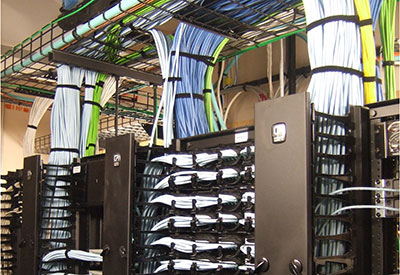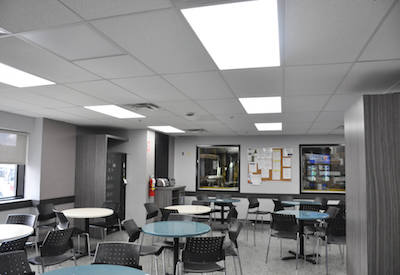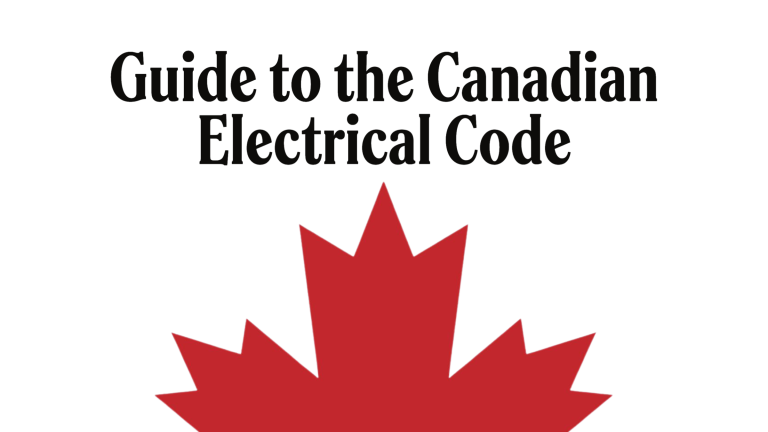The AI Tsunami – And How To Swim In It

June 21, 2023
By Melvin Newman – CTO, PataBid
Does the mention of AI, ChatGPT or Machine Learning raise the specter of heavily armed marching machines in your mind? Do these thoughts keep you up at night?
We are at a very interesting point in technological development. The pace of technological development is as fast as it has ever been in human history with a dizzying array of new hardware, concepts and platforms coming out every day it seems. Perhaps this year 2023 will be remembered as the year of Machine Learning/Artificial Intelligence (ML/A). ChatGPT captured everyone’s attention and has set off a storm of interest in the field of ML/AI across almost every industry!
In a recent article from DataProt, it was found that 37% of businesses are currently employing AI in some capacity. In the same article it was found that nine out of ten leading businesses have investments in AI technologies.
But what does all this mean for electrical construction? How does the emerging field of ML/AI impact our work in the field, in the office or on the road? Can I ask ChatGPT to install a plug box or hang a fixture? Well, the short answer is no! Although it is fascinating to think about the possibilities of a more articulated Boston Dynamics Spot robot mixed with an AI assistant.
TRENDS
AI in Contruction.
The current trend in construction for AI implementation is predominantly for home office tasks. These tasks typically involve a lot of manual data entry or quantification but without a lot of “thinking” per say. Things like invoice import automation for an ERP system or takeoff on a set of drawings are key tasks that AI is making strong inroads on. These tasks can take up a lot of time for administrators, estimators, project managers and even owners. This time has minimal direct impact on the revenue of a company but significant impact on its profitability.
The core strength of AI, especially on the machine learning side, is its ability to review large quantities of information to extract small easy to miss details. This can all be done extremely quickly with today’s technology. Construction at all scales generates large amounts of data, whether it is realized or not. From single home electrical contractors to massive hospital builders. This data is what AI in construction is targeting.
Preconstruction is currently one of the top areas of AI development and focus. It is also a very key area that contractors often overlook as it does not directly generate revenue. Preconstruction is everything from the client business planning for a project to the closeout of the estimate and contract award. For the electrical contractor though, the most important preconstruction aspect is the cost estimate.
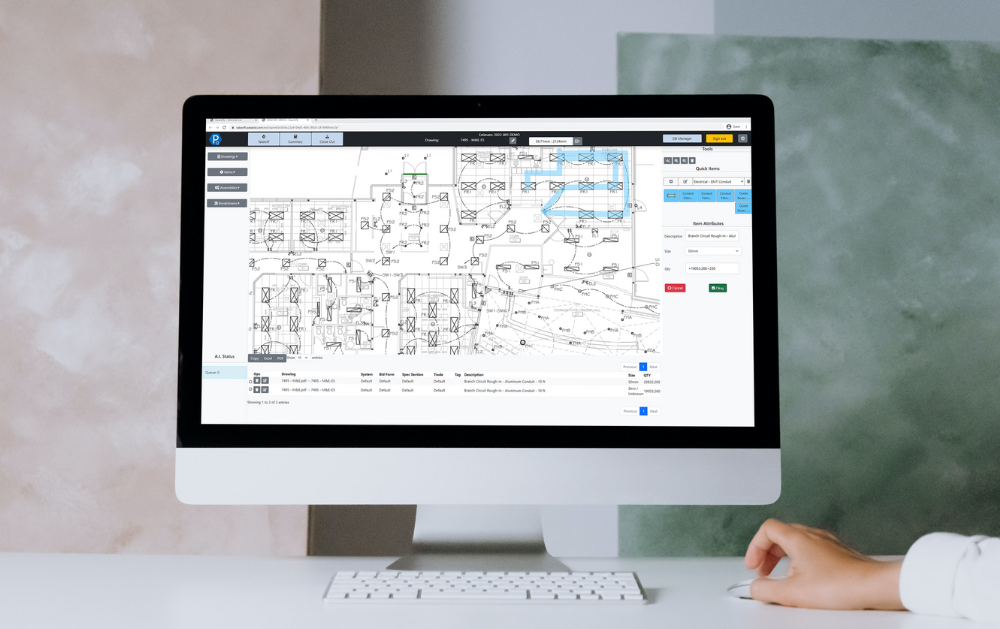
Finding and estimating work is a major portion of an electrical contractor’s “overhead” workload. If projects to bid on are not found and estimates are not produced, then no revenue will be generated. However, these tasks do not directly or immediately lead to revenue. According to Cotney, Adams & Reese LLP, general contractors on average win 1 out of 6 bids (or 17%). For electrical contractors bidding on opportunities, it can be anywhere from 10% – 20%. This means that the preconstruction estimating phase of a project represents a significant investment of time with a very small chance of a return on that investment.
Looking at some examples, if an electrical estimator is paid $45/hr and takes one week on average to bid a project worth about $500,000 this works out to an investment of $1,800/bid. If the average for these projects is 1 in 10, that works out to just over 5 projects won per year, but 52 bid. This is an investment of approximately $93,600 to win those 5 projects worth $2.5 Million. If this contractor makes an 8% margin on that, it equates to a gross profit of $200,000. This means that the cost of estimating work can consume a very large amount of profit potential. This also assumes that these 5 projects are completed with no losses!
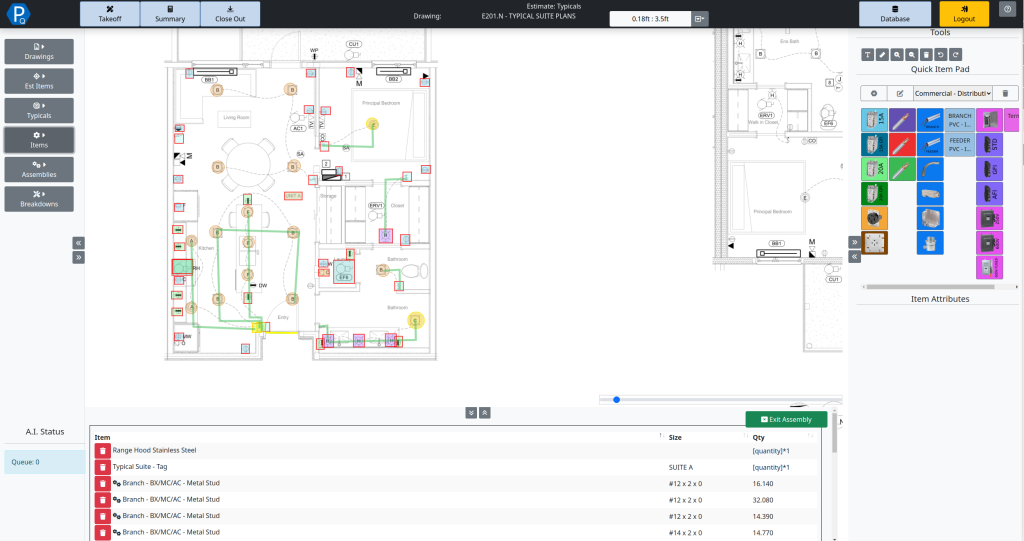
Using AI assisted takeoff alone can save up to 30% of the time it takes to prepare a detailed estimate. This means that our electrical estimator could complete up to 68 bids in a year representing another 2 to 3 successful contracts at the very limited extra cost of a platform like PataBid Quantify. PataBid Quantify is an AI-powered electrical estimating software that has a built-in automated takeoff feature, called Rapid Count. Quantify also offers contractors other automated features including pricing integration, pre-built assemblies, typicals and much more. PataBid Quantify’s AI assisted takeoff combined with the additional automation tools listed above allow contractors to harness the power of new technology to bid electrical work effectively.
However, utilizing AI-powered takeoff features assumes that you have the bid opportunities for your estimator to work on. Finding bid opportunities is a very labor-intensive process on its own. Once a bid opportunity is found how is it analyzed to see if it is worth bidding?
There are several areas that AI is stepping into to help contractors reduce the time investment at the very front end of the business cycle. In finding and sourcing opportunities, there are a number of platforms that aggregate bid opportunities. Platforms like PataBid Tenders have started deploying Natural Languages Processing AI technology to pre-filter and identify key opportunities for contractors out of the huge volume of available tenders. These platforms can save hours a week of time spent browsing tender posting sites or reading commercial postings. As an added bonus, PataBid Quantify users have integrated access to PataBid Tenders free of charge so contractors can find and bid work on the same platform.
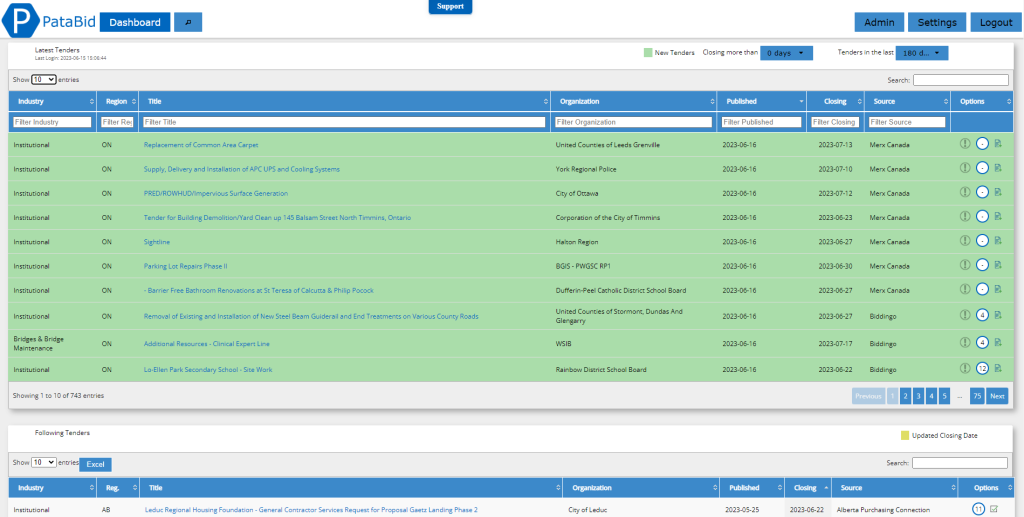
Once a list of tender opportunities is put together, how are they analyzed to identify the best ones? This is where tools like Microsoft Power BI are developing into key power tools for contractors of all sizes. Power BI is an inexpensive data analytics tool that is produced and operated by Microsoft. It enables simple data collection and very powerful analytics. Using a platform like Power BI to track estimating and even project performance allows contractors to build simple but very robust datasets.
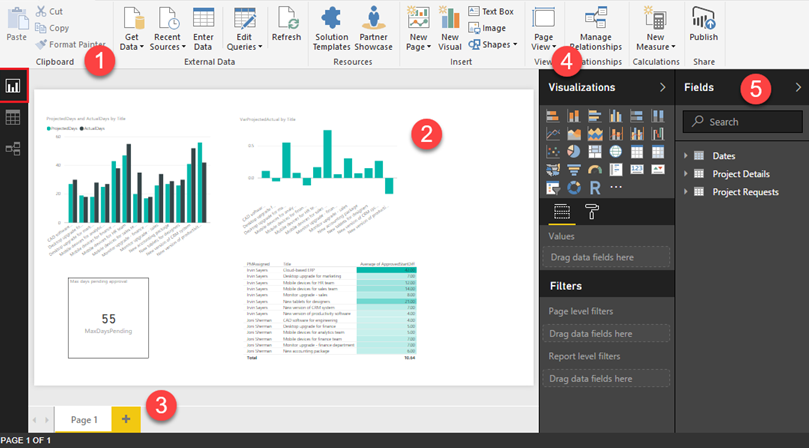
These datasets can be processed within Microsoft Power BI to allow insights to be extracted in real time. With appropriately tracked opportunity and project metrics (ex. client, location, success rate, value, etc.) the Power BI platform can be used to predict success rates and help contractors of all sizes streamline their preconstruction processes.
Using these AI enabled tools is quickly becoming less of an interesting option and more of an absolute necessity. As preconstruction schedules are getting compressed, documentation quality is dropping and risks to contractors at all levels are increasing, AI technology can be leveraged today to identify and improve all aspects of construction projects. Time savings are probably the key benefit though to the newly emerging AI construction technology platforms. Time is at a premium in construction more than ever before and all tools must be explored to reduce the time and risk in construction. The risk of not exploring and learning these tools is that your company may reach a point where there is no more time in a given day to grow the business. It is important for electrical contractors to research emerging AI-powered tech tools, especially at the preconstruction stage, to bid electrical work accurately and future proof their businesses.
To learn more about how PataBid Tenders or PataBid Quantify mechanical/electrical estimating software can help your business grow, visit www.patabid.com.
For additional resources on digital estimating, visit PataBid’s blog, Youtube channel or Instagram page.
Related

Post-Modern Estimating Methodologies
How do you estimate a project today? At its core, the function of estimating a construction project is much the same today as it has been throughout human history. Project costs and quantities must still be calculated just like they were when the great pyramids were built. Read More
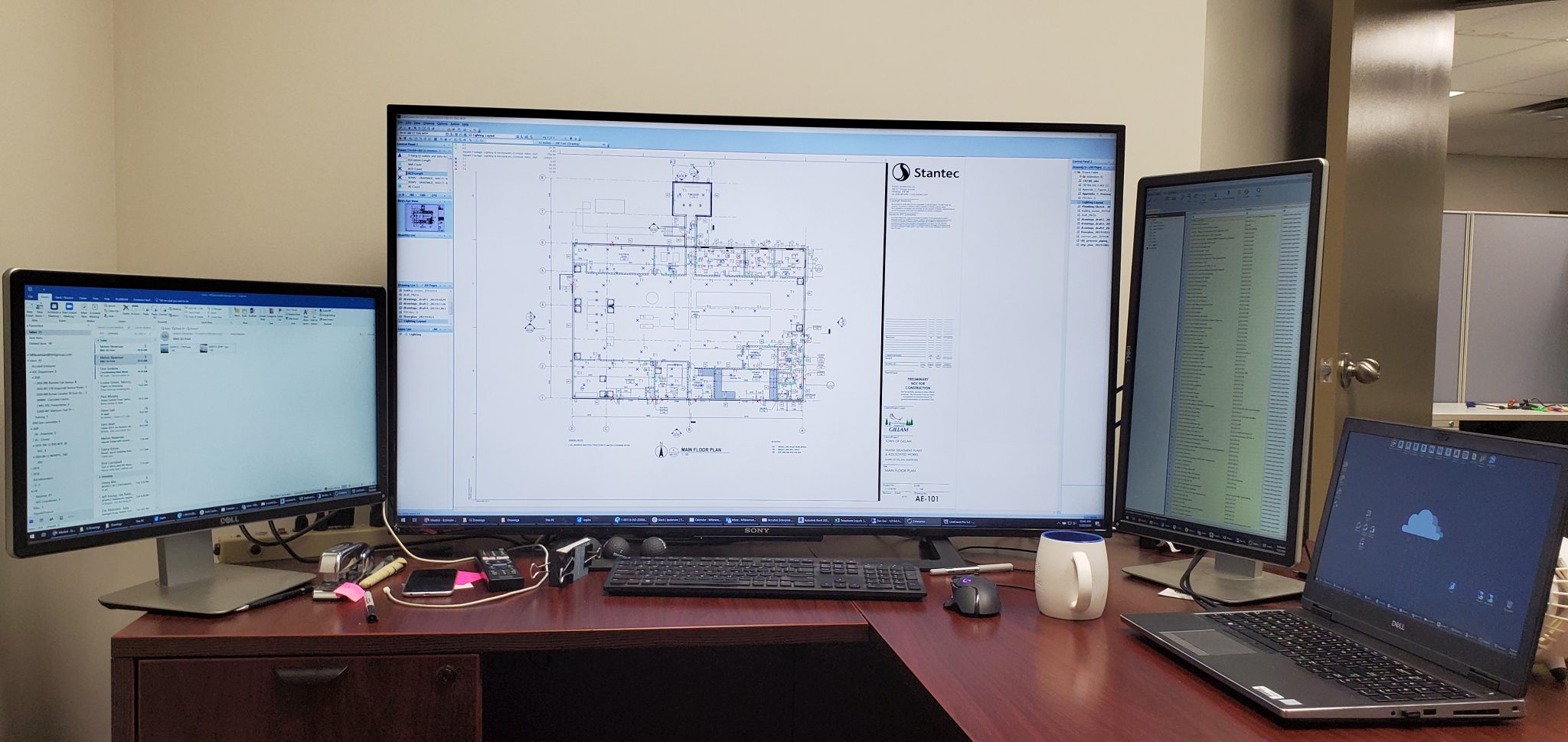
What to Consider When Integrating Digital Estimating into your Business
Digital estimating has been a part of the electrical industry for several decades, starting with early systems in the 1980s that were based on Microsoft DOS. Read More



